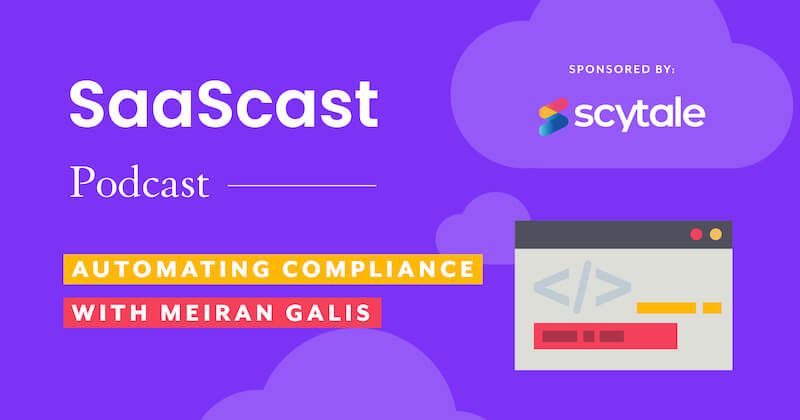Got an exciting SaaS product idea? Awesome! But there's a big gap between idea and reality, and it comes with its own set of challenges.
To succeed on this journey, you've gotta master the art of SaaS platform maintenance, handling things like keeping the product up-to-date, managing data, supporting customers, and keeping an eye on bugs. Building and running a SaaS platform means juggling lots of responsibilities.
The SaaS industry has exploded, growing by about 500% in recent years. It's more lively and diverse than ever. But, it's also more competitive than ever, and there's immense pressure to create a product that runs smoothly and gives customers a top-notch experience.
That's why we're here to break down SaaS operations for you. Let's jump right in!
What is SaaS operations?
In a nutshell, it's all about efficiently handling tasks to keep your SaaS product in top shape. But it's not a solo act; you need a reliable SaaS operations management platform to help with:
System monitoring: System downtime can be costly, especially for B2B products. When your product is vital for your customers' work, it must be reliable with minimal room for errors. This software keeps a watchful eye, ensuring your platform runs smoothly, providing real-time updates and reports to keep you informed.

Data security: Building trust with your customers hinges on keeping their sensitive data safe. It's a no-brainer: safeguarding customer data is a top priority. A SaaS operations management tool ensures data protection and compliance.
Customer support: With a growing customer base, addressing their concerns quickly is crucial to reduce churn. But expecting your staff to handle high-level customer support at a fast pace is a tall order.
The good news is that the right customer support software can simplify problem organization and resolution, leaving more complex issues to your human personnel. Effective customer service is vital, and the right platform streamlines ticket management, communication, and issue resolution.
What are the different components of SaaS operations?
SaaS operations encompass all the tasks needed for a smooth-running SaaS product or service. To streamline these operations, you absolutely require the right SaaS tools. These tools handle everything, from setting up and maintaining infrastructure to monitoring the application itself.
Let's break down SaaS operations into three main categories:
- Infrastructure management: This involves setting up and managing the underlying infrastructure for your SaaS product or service. Specialized SaaS tools designed for infrastructure management make setup quicker and ensure continuous updates.
- Application management: Here, it's all about monitoring and managing the actual application. The right tools come into play for identifying and fixing bugs and ensuring smooth rollout of new features. They enhance performance and maintain app quality, preventing customer encounter with bugs and problems that could lead to churn.

- User management: Managing your SaaS product or service's users is crucial. The right software helps you track customer profiles, behaviors, and product usage, enabling you to consistently deliver the best experience. These tools handle tasks such as creating and managing user accounts and providing support when needed, making user management efficient and streamlined.
Why do you need SaaS operations?
Typically, a team of IT professionals, experienced in software development, manages SaaS ops. However, some companies choose to outsource these operations to third-party experts using a central SaaS management platform.
Why all the fuss? SaaS operations require regular maintenance, updates, and swift issue resolution. A robust management platform streamlines these tasks and provides a complete operational overview.
Customer satisfaction is key in SaaS operations. With a powerful management platform, offering prompt and effective customer support becomes easier, including options like live chat, phone support, and regularly updated knowledge bases or FAQ sections on your website.

But recommending software to monitor your platform doesn't mean you can neglect system monitoring. Close system monitoring is essential to detect and resolve potential problems promptly.
SaaS operations management platforms typically integrate various tools and techniques like log analysis and performance monitoring to quickly identify and address issues. Thus, a capable management platform lies at the heart of successful SaaS operations management.
What are the core benefits of a SaaS operations model?
If you're still not fully committed to adopting a SaaS operations model, here are some incredible benefits to consider:
Cost savings: Converting new customers is more expensive than retaining them for SaaS companies. A top-notch SaaS operations strategy helps you proactively address issues, reducing customer churn. This means you won't have to spend as much on acquiring new customers to compensate for losses.
Flexibility and speed: Responding to customer complaints and concerns as they arise can be time-consuming. A solid SaaS operations strategy allows you to identify and address potential problems before they lead to customer churn.

Improved security: SaaS operations handle tasks like patching, updates, and security, freeing up your team to focus on broader initiatives while ensuring your data and apps remain secure.
Incorporating a SaaS operations model isn't just convenient; it's a smart move that saves you money, enhances flexibility, and strengthens security. It's a win-win-win!
Some great examples of SaaS operations software
Your typical SaaS organization is complex, with various departments and many moving parts. Here's a breakdown of the software you'll need to excel in SaaS operations:
CRM (Customer Relationship Management): This tool helps businesses manage customer relationships by storing essential customer information, creating accurate profiles of their wants and needs.

ERP (Enterprise Resource Planning): ERP software acts as the master conductor of business operations, ensuring synchronization across finances, inventory, and overall business functioning.
HCM (Human Capital Management): HCM software handles employee-related tasks like payroll and HR, as unhappy customers can negatively impact work culture and, subsequently, your product's health.
Marketing Automation Software: This tool streamlines marketing efforts, automating tasks such as email campaigns and lead generation.
These applications are vital for business operations and must be available 24/7. SaaS operations teams have the crucial responsibility of monitoring the system, ensuring optimal performance, collaborating with the engineering team to introduce new features and improvements, and safeguarding data storage and backups.
What is the ideal structure for a SaaS operations team?
We've discussed software and management systems, but does that mean your human teams take a backseat? Not at all. Your team and how you structure it are crucial for smooth SaaS operations.
Why? Operations management requires a collaborative effort; a team of professionals working together to keep everything running smoothly. Let's meet the key players:

Systems administrator: The backbone of the operation, handling infrastructure essentials like servers, operating systems, networking, and storage.
Platform engineer: Responsible for the software driving the SaaS platform, managing application code, database setup, and third-party software integrations, ensuring smooth operation.
Site reliability engineer: Monitors uptime and performance, ensuring the SaaS platform is always available and responsive. Quick to act in case of hiccups or outages.
DevOps engineer: The automation experts, automating processes for building, deploying, and running the SaaS platform, from infrastructure setup to smooth operation.

It's like a well-coordinated orchestra, with each team member playing a vital role in ensuring seamless SaaS platform operation.
Wrapping up
The primary objective of any SaaS founder is simple: Unlock your creative potential and impress your customers with innovative solutions. To achieve this, you need a solid foundation – that's where SaaS operations come in. Just like a skyscraper needs a strong base, invest in your foundation today and watch your SaaS organization soar to new heights.
Want more top insights from some of the leading minds in SaaS? Why not sign up for exclusive insights with a Future of SaaS membership plan?





